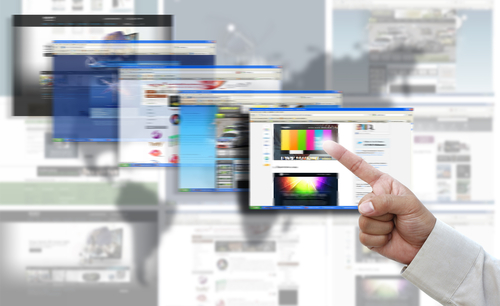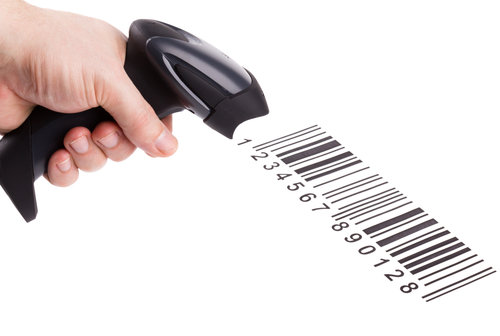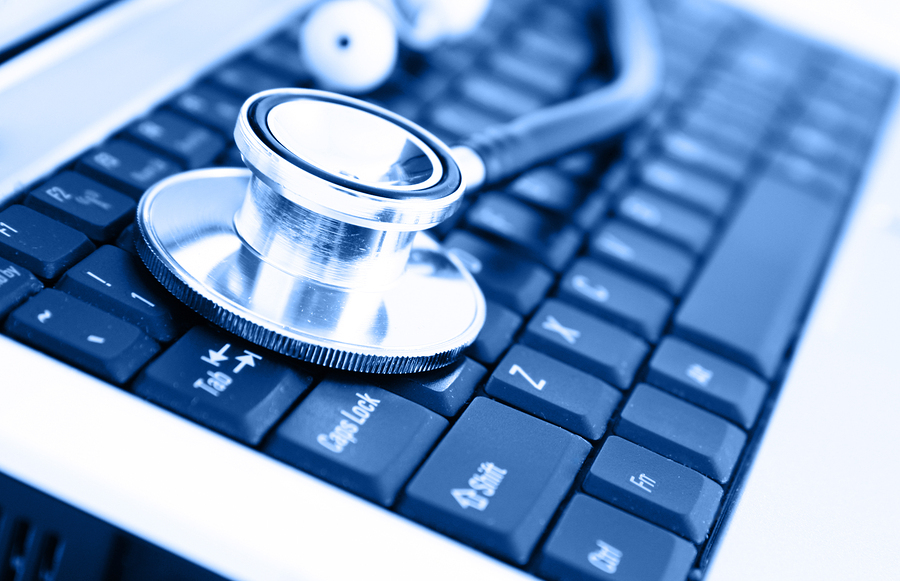-
- HOME
- ABOUT US
- SERVICES
- SOLUTION
- PRODUCT
- INDUSTRIES
- CLIENTS
- CONTACT US
- CAREERS
- LOGIN

RRT - Student Accounting Rate Rollover Tool Universities /collages are required to update their student fees and other charges on a semester wise or on a yearly basis . Maintaining new fees and charge structures on a period basis are imperative for any of the education institutions. Currently, Education institutions where SAP SLCM (Student Life Cycle and Campus Management) solution implemented are experiencing a major business process gap of missing of a user friendly functionality where business users are be able to roll over the existing fees and other charge rates to next semester or year. Only way to roll over the rates is to manually create condition records in every semester/year. This solution gap created substantial manual efforts for business analysts and spend an average of 4-6 man weeks to enter the new/revised rates in the SAP system in every semester/year Current solution in "Rollover Rates Tool (RRT)" will help SAP SLCM business users to upload the new rates from excel sheet and new rates will be automatically created. This too will also give an opportunity to cross check the rates before updating into SAP System .In addition to automatically create the rates, this tool also equipped with transferring rates to Quality and Testing SAP instances through ALE (Application Link Enabling) Implementing this tool will save an average of 4 man week efforts in every semester/year for SAP SLCM customers

BARCODE / RFID Logistic Process To automate the warehouse operations, improve efficiency and reduce manual operations. Currently, the work process in the warehouse is characterized by speed, reliability, and precision in processing individual goods movements. To make sure that work is performed efficiently and at a reasonable cost, the warehouse staff requires simple and easy-to-view control of each individual process. The radio frequency (RF) solution provides fast and error free data communication through the use of mobile RF terminals. This, in turn, provides a high standard of quality. The RF terminals receive data directly from the SAP System and transmit the results back to the system. You can scan the information that needs to be recorded, such as storage unit numbers, using a bar code (for example, based on UCC/EAN128 standards), and also use the bar code scan to verify the storage bins. The display of information on the RF terminal is possible with a graphical user interface. You can execute the individual functions using pushbuttons on a touch screen. GUI Device These devices are connected to the SAP System just like any other client-dependent PC. The screens can be touch screens, using predefined pushbuttons, or they can operate using a keyboard. If you are using touch screens, you simply "touch" the appropriate positions on the touch screen instead of double-clicking with the mouse on a pushbutton. System fonts and size should correspond to the guidelines provided in order to achieve optimal utilization of the screen size. Architecture The ITS template generator is a more recent offering, released throughout 2007 inside various support packs associated with different SAP versions. It is a utility within the ABAP development workbench (SE80) that basically converts ABAP-based screens (Dynpros) into HTML based screens, which are then accessed by mobile users connecting through ITS. As screen generation occurs at design time, the ability of enhancing the ITS screens to suit different circumstances is possible and even encouraged. Solution Architecture • Mobile devices running a client browser connect directly to SAP NetWeaver server via ICM (Internet Communication Manager). • HTML over HTTP/HTTPS • Options for redundancy and load balancing. Solution Profile Replacement for WebSAPConsole Any web-based application Recent offering, built on mature ITS platform ABAP and HTML Fulfills both global or local strategies Solution Maturity • The ITS technology has been in use for many years (~1998), but only recently became part of the SAP kernel (~2004). • ITSMobile, the concept of using ITS as a platform on which to create applications for mobile devices was formally introduced in 2007. Solution Availability & Support Integrated ITS (SAP NetWeaver 6.40 and above) is considered part of the SAP kernel and thus can be viewed as being supported in perpetuity. Application Platforms • SAP NetWeaver 7.0 from SAP Basis 7.00 SP11 • SAP NetWeaver 2004 from SAP Basis 6.40 SP21 *Note: Integrated ITS information only Device Compatibility Any device with an HTML browser is supported Note: The caveat to this statement is that the world of graphical devices and associated browsers change at a rapid pace – hence there will ALWAYS be some tweaking required to make a device work. User Interface & Ease of Use • Browser-based interface. • Potential to make UI simple or too complex • Screen navigation supports both function key and touch screen input • UI enhancements possible. Development environment • All development done in ABAP Workbench (ABAP and HTML editors). • Primary programming language is ABAP, although development could also be HTML-based. All conversion to HTML is done at design time in ABAP Workbench. Extensibility & Scalability • ITSMobile offers the most flexibility, as it is the most open environment in which to create extensions that can be used to resolve different types of data collection or user challenges. • Full control over screen conversion process allows for advanced capabilities and device support. • ITS was designed to handle a large number of user connections. Security • Supports standard SAP Logon via logon screen • Since ITS is integrated in the SAP NetWeaver Application Server, features like Single Sign On (SSO2) and connection encryption (SSL, SNC) are provided by the application server. Performance • ITSMobile performance is primarily dependant on the ITS core engine and the SAP backend system where the ABAP/HTML program is running. • In general, it is doubtful that users will notice any significant difference from SAPConsole – otherwise something is setup incorrectly Solution Complexity • ITSMobile should be considered a solution of medium complexity. • ITSMobile has the fewest “moving parts” (e.g. no extra server). • The open architecture offers the potential to become quite complex due to customization. Run-time Operation • Run-time settings for core ITS that affects memory consumption and other application behavior. • Run-time monitor for viewing and manipulating ITS connections • All run-time settings located in SAP NetWeaver • Potential for core ITS optimization conflicts when managing both mobile and non-mobile users. Limitations • Load balancing not trivial • No standard support for device function keys, scanner, field control, local printing, etc. • Advanced capabilities requires knowledge of Jscript • Limited history as industrial data collection solution Advantages ITSmobile is a new superior solution for bringing SAP screens to mobile devices and replaces WebSAPConsole. It provides the following advantages: Fully integrated with SAP Netweaver 2004 and above No additional server required as with WebSAPConsole leading to reduced total cost of ownership (TCO) Easy customization of any SAP screens is possible with ITS templates in ABAP Workbench to meet customer requirements on mobile devices Doesn’t require Mobile Infrastructure which requires specific license Key Benefits of Adopting ITSMobile Since ITSMobile calls the underlying transactions from core ECC 6.0 and hence all features / properties of ECC are inherited i.e. • Scalability • Platform and database independence • ABAP workbench (ABAP language, ABAP dictionary, debugging tools) • Lock management • Update task management • Touch screen capabilities for windows Mobile and CE-based devices • User management and authorization concept • Workflow • Change and Transport System • Database buffering Functionality > Goods Receipt > Inbound Delivery > Outbound Delivery > Goods Issue > Put away > Picking / Replenishment > Interleaving > Packing and Unpacking > Inventory Counting > Loading and Unloading > Shop Floor Process Additional Features: > Task and Resource Management > With handling Unit / Without Handling Unit > Queue Management > Serialization > Partial Confirmation of Transfer Orders > Cross-Docking > Multi User Processing of SAP Documents > Inventory Management processes

UST*CMS (Campus Management System) • Achieve Excellence • Improve Services • Better Accountability Whether a private college or a government funded institution, both share the same goal to provide students with quality education by optimal utilization of available resources. Higher education providers around the world operate in an increasingly competitive market. Information Technology is one of the key competitive advantages that education providers harness. Managing an institution of higher education requires more than just simply processing admissions and collecting fees. It requires to effectively managing students, faculty and staff as well as track donations and grants. UST’s Management System is the complete solution to support the fundamental college requirements of any educational institution. It incorporates an extensive range of activities essential to organization. It provides a single source of data repository for streamlining college business processes and reporting purposes. UST's Campus Management System connects data, systems and people - integrates and automates student, faculty and administrative information, material management and finance allowing real-time access to all campus activities. CMS is a powerful Campus Management System, integrating all key processes, transactions and academic rules of the institution, helping to deliver efficient and effective information. It offers all the functionality and flexibility that leading institutions today require. In today’s demanding environment there is ever-increasing need of meeting goals while increasing the flexibility to stimulate innovation and growth and this is what CMS provides. Summary of Features It is a comprehensive college management system developed from the ground up to fulfilling the needs of independent institutions (colleges/Universities) as they guide their students to success. This integrated information management system connects daily operations in the Campus environment ranging from Admissions and Registration to Finance, Faculty, Medical, Material, Library and R&D. This reduces data error and ensures that information is always up-to-date throughout the Campus. • It provides a single source of data repository for streamlining your business processes and reporting purposes. • It has a simple user interface and is intuitive. This ensures that the users spend less time in learning the system and hence, increase their poductivity. • Efficient security features provide data privacy and maintains data integrity. • You can send email messages and notices to an individual or department. • Enables easy modifications, easy collaboration over the internet and offers complete life cycle management for your business processes. • Supports your institution’s daily operations by eliminating duplicate data entry, sharing the most up-to-date information, maintaining a detailed history of essential records. It has provision for dynamic report preparation. Each module has been categorized by user type with password for accessing different modules. There are six types of users like System Administrator, Student, Staff, Inventory, Accountant and Librarian. System Administrator can access all module and can design own report for his requirement. Rest users can access only their own module and are not authorized to edit data. Benefits of UST*CMS • It is a fast , affordable, low-risk solution with easy implementation and lower maintenance and operational costs • Helps to optimize the use of available resources in a cost effective manner through their proper scheduling and resource allocation. • Integrates seamlessly into the existing IT infrastructure, hence minimal cost overhead. • It is an excellent tool to promote and manage enrollment growth and provide accurate • enrollment data. • Acts as a decision support tool for the top management and decision makers by generating • real time reports. • Increase faculty time spent on research and interacting with students • Reduces information time lag, hence, reducing the pipeline delay for any activity. • Increases the accountability of the individuals towards their work commitment and foster • good working culture in the organization. • Eliminate duplicate data entry and redundant information storage that most often propagates • errors. • It saves time and money.

UST*ECS 7.1 (Examination Control System) ADDRESSING THE HIGHER EDUCATION NEED TO ADMINISTER. EXAMINATIONS EFFICIENTLY AND CORRECTLY UST*ECS 7.1 is a total automation package for the examination controller’s office in Higher Education institutions in India. Manage examinations and process results quickly and without the usual headaches associated with this complex process. A single integrated solution which can be configured for any college, faculty , department or discipline. Manage Exams/Tests , Save Time , Save Money , Increase Accuracy, Simplify Reporting ,Quick ROI UST*ECS is the most efficient, painless and affordable solution for Higher Education institutions involved in examinations and testing. Business Features • Single, integrated product which can be configured for any • Record marks and perform tabulation • Double entry validation for maximum accuracy in tabulation • Publish report cards and certificates • Please call for a free technical consultation • examination and testing Technical Features • MS Windows Client/Server Application • Based on Microsoft .Net technologies • Easy to use GUI (Graphical User Interface) • Object Oriented Design • Uses Microsoft SQL Server RDBMS
As part of its Educational products, UST has developed an efficient Library Management System. Our Library Management System comes fully featured ready to support any modern library and is equipped with both Bar Code and RFID (Radio Frequency Identification) Interface.
The system provides all library management functions including the following:
• Maintain Book Master
• Member Registration
• Book Search
• Book Issue /Return
• Book Reservation
• Book Demand

HIS is a comprehensive, integrated information system designed to manage all the aspects of a hospital's operation, such as medical, administrative, financial, and legal issues and the corresponding processing of services.
Hospital Information System architecture has three main levels, Central Government Level, Territory Level, and Patient Carrying Level. Generally, all types of hospital information system (HIS) are supported in client-server architectures for networking and processing. Most work positions for HIS are currently resident types. Mobile computing began with wheeled PC stands. Now tablet computers and smartphone applications are used.
Enterprise HIS with Internet architectures have been successfully deployed in Public Healthcare Territories and have been widely adopted by further entities.[1] The Hospital Information System (HIS) is a province-wide initiative designed to improve access to patient information through a central electronic information system. HIS’s goal is to streamline patient information flow and its accessibility for doctors and other health care providers. These changes in service will improve patient care quality and patient safety over time.
The patient carries system record patient information, patient laboratory test results, and patient’s doctor information. Doctors can access easily person information, test results, and previous prescriptions. Patient schedule organization and early warning systems can provide by related systems.
HIS has data warehousing as the main topic, hence a more static model of information management. HIS is often composed of one or several software components with specialty-specific extensions, as well as of a large variety of sub-systems in medical specialties from a multi-vendor market. Specialized implementations name for example Laboratory Information System (LIS), Policy and Procedure Management System,[2] Radiology Information System (RIS) or Picture archiving and communication system (PACS).
Architecture is based on a distributed approach and on the utilization of standard software products complying with the industrial and market standards must be utilized (such as: UNIX operating systems, MS-Windows, local area network based on Ethernet and TCP/IP protocols, relational database management systems based on SQL language or Oracle databases, C programming language).
Portable devices such as smartphones and table computers may be used at the bedside.
Hospital Information Systems provide a common source of information about a patient’s health history. The system have to keep data in secure place and controls who can reach the data in certain circumstances. These systems enhance the ability of health care professionals to coordinate care by providing a patient’s health information and visit history at the place and time that it is needed. Patient’s laboratory test information also visual results such as X-ray may reachable from professionals. HIS provide internal and external communication among health care providers.
The HIS may control organizations, which is Hospital in these case, official documentations, financial situation reports, personal data, utilities and stock amounts, also keeps in secure place patients information, patients medical history, prescriptions, operations and laboratory test results.
The HIS may protect organizations, handwriting error, overstock problems, conflict of scheduling personnel, official documentation errors like tax preparations errors.